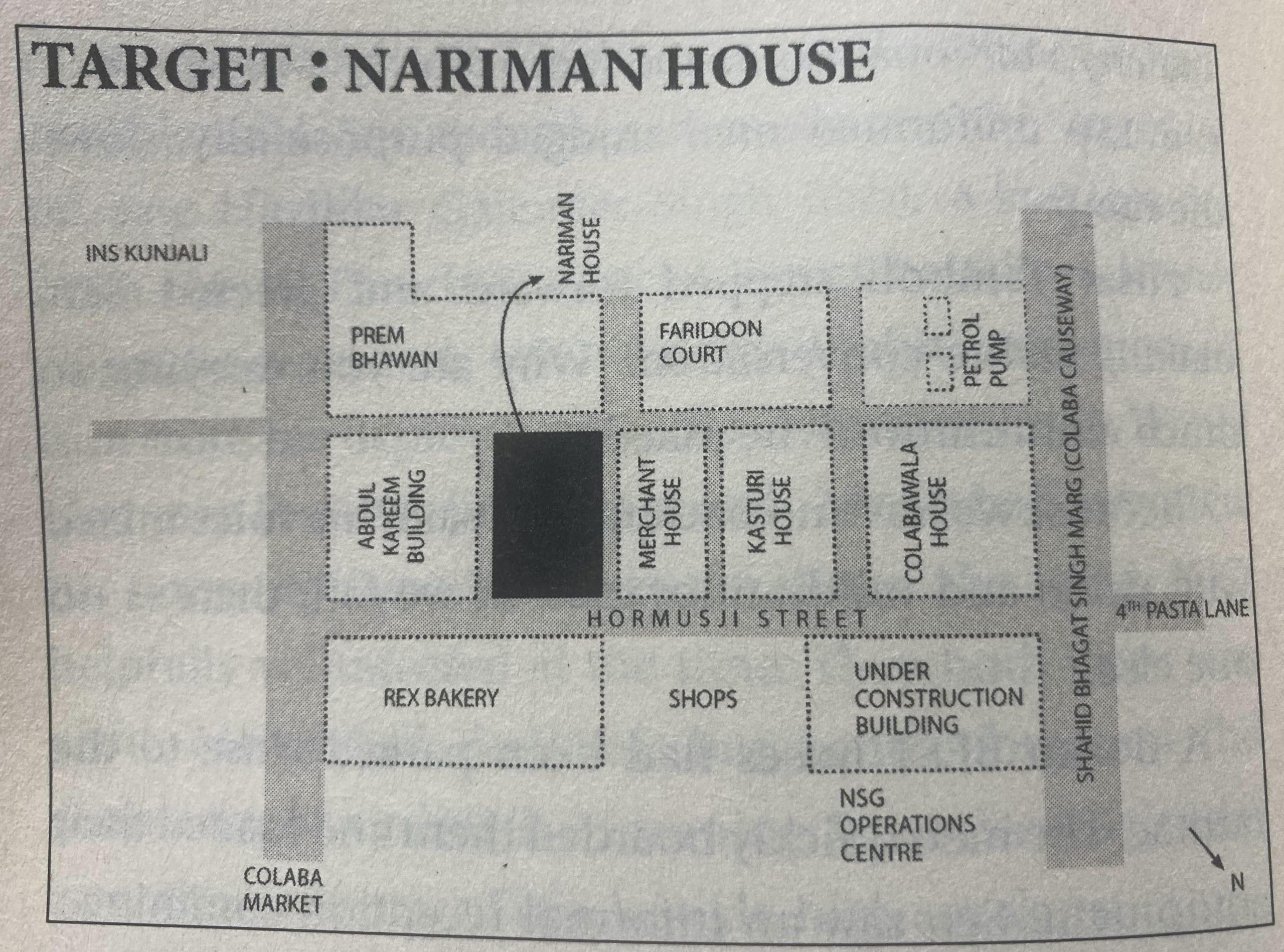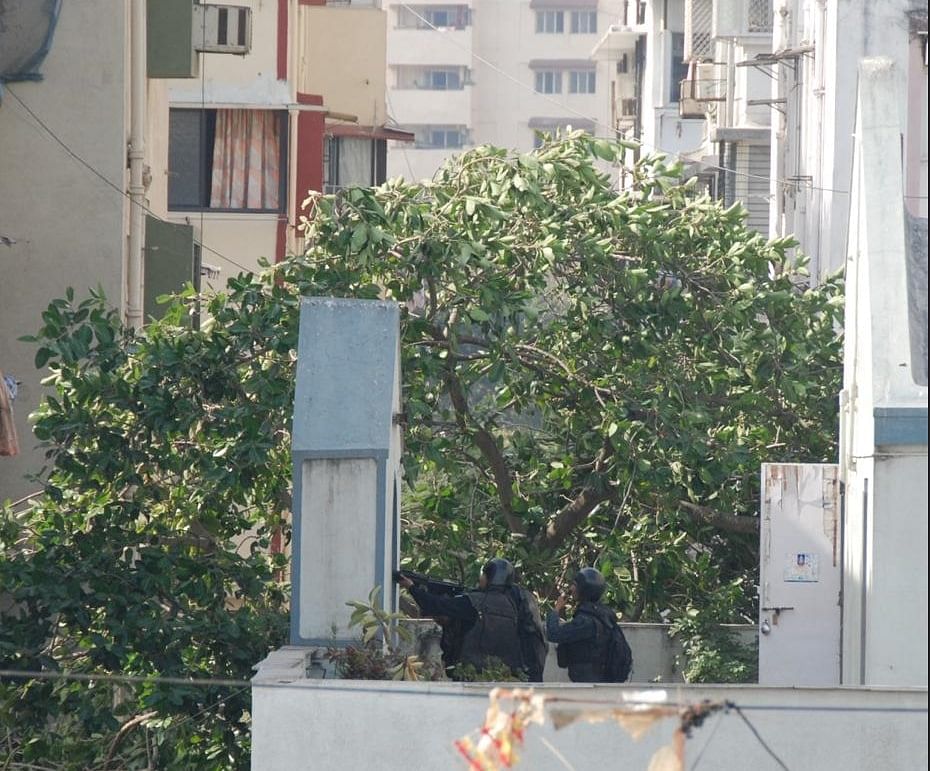On 27 November 2008, when Lieutenant Colonel Sundeep Sen and his team of NSG commandos landed at the Mumbai airport to proceed towards Nariman House — the Jewish place where terrorists had taken hostages — little did he imagine what lay in store even before he could launch the operation.
The previous day, on 26 November, armed terrorists from Lashkar-e-Taiba had attacked multiple locations. Upon arrival in the city, Sen and the NSG team were subjected to a wild goose chase by the administration — from the Cabinet Secretariat to the Colaba police station — as they struggled to locate Nariman House. At the Colaba police station, Sen noticed a man with a red tee on a scooter who had been following them all along. The stranger — a local Mumbai Jew — stepped forward, introduced himself, and guided the NSG team to Nariman House, which was a couple of kilometres from the Colaba police station.
When Sen and his team arrived at Nariman House, the building was surrounded by hundreds of onlookers. Despite several police officers present on duty, none could give Sen the exact number of terrorists holed up inside, until help came from an unexpected quarter.
A friendly neighbourhood
Lucy, who had been a reservist in the British Territorial Army, was now married to an Indian corporate executive and lived in the adjacent building. Holed up inside her apartment, she and her husband bore the brunt of terrorists’ firing from the window of Nariman House. Lucy would prove to be an important ally that evening. Her training helped her stay unruffled and make key observations about the patterns of firing.
Undaunted, she had taken cover but continued to observe the firing emerging from the window of Nariman House. ‘Two,’ she told Sundeep—there were two militants because she saw them firing from the window. The terrorists had fired from different points to hoodwink the police, but had failed to fool a reservist. Her inputs helped Sundeep eke out plans to tackle the terrorists.


Also read: Ajmal Kasab was hanged 10 years ago. But MV Kuber boat is an albatross for owner
Employees and duty of care
The situation at the Taj Hotel, another location the terrorists laid siege, brought out the best in its employees. “This extraordinary customer centricity helped, in a moment of crisis, to turn its employees into a band of ordinary heroes,” wrote Harvard Business Review.
For instance, sensing grave danger, Mallika Jagad, a hotel banquet manager, showed presence of mind to shut down doors and switch off lights. She handled agitated and nervous guests calmly and cordoned them off from the rampaging terrorists in other parts of the hotel. Zaheen, a chef, chose to risk his life and help evacuate guests but was shot dead. Many people played a part — phone operators kept alerting guests, employees took women and children to a safer part of the building, and guests were evacuated. Eleven hotel employees died while helping around 1,500 guests escape.
Women of Manesar: Able foil to commandos
In counter-terrorist operations, rarely are mentions made of the spouses of those army personnel in action. Unlike previous armed operations, 26/11 was a unique one. Stationed at Manesar while their husbands had flown overnight to Mumbai, the women found themselves in a strangely terrifying situation — watching on live television their husbands operate against dreaded terrorists. Previously, they would read about their husbands’ operations in distant places but watching them operate live in a city was a nervy first.
Huddled before television sets, the families consumed the news and banded together over conference calls every few hours to ward off nightmarish thoughts. During the operation, when an NSG commando died, the rest of the women in Manesar took on the responsibility of breaking the news to the deceased’s wife, helping her cope with the tragedy. In fact, in the absence of an effective state intelligence and information dissemination system, news such as the death of Major Sandeep Unnikrishnan at the Taj was relayed to the commandos operating at Nariman House through phone by the women in Manesar.

The power of the bystander: An image of hope
The most crushing images of terrorist attacks are usually about death and desolation. The abiding image from 9/11 is a falling man from the tower. In recent memory, the pictures of a woman hostage paraded on the streets of Gaza by Hamas or the hospital in Gaza bombed to smithereens by Israel will continue to hurt our memories.
Amid the gloom that surrounds such tragic events, there are those regular people who, caught unawares amid the whirlwind of a catastrophe, keep their calm and play saviour from the shadows. From the tragedy of 26/11, the image of the Indian nanny Sandra rushing out frantically from Nariman House with ‘Baby Moshe’ — a toddler and the youngest survivor that day — clutched in her arms, will forever remind us how regular people, pushed to the brink, summon courage to find extraordinary strength.
On the occasion of 26/11, it is through such powerful moments that citizens provide us with hope of resilience over terror.
The author is a former Army officer and author of Camouflaged and Watershed 1967: India’s Forgotten Victory over China. Views are personal.
(Edited by Prashant)



